Renal fibroblasts are involved in fibrogenic changes in kidney fibrosis associated with dysfunctional telomeres
- PMID: 39349834
- PMCID: PMC11541748
- DOI: 10.1038/s12276-024-01318-8
Renal fibroblasts are involved in fibrogenic changes in kidney fibrosis associated with dysfunctional telomeres
Erratum in
-
Author Correction: Renal fibroblasts are involved in fibrogenic changes in kidney fibrosis associated with dysfunctional telomeres.Exp Mol Med. 2024 Dec;56(12):2763. doi: 10.1038/s12276-024-01370-4. Exp Mol Med. 2024. PMID: 39633034 Free PMC article. No abstract available.
Abstract
Tubulointerstitial fibrosis associated with chronic kidney disease (CKD) represents a global health care problem. We previously reported that short and dysfunctional telomeres lead to interstitial renal fibrosis; however, the cell-of-origin of kidney fibrosis associated with telomere dysfunction is currently unknown. We induced telomere dysfunction by deleting the Trf1 gene encoding a telomere-binding factor specifically in renal fibroblasts in both short-term and long-term life-long experiments in mice to identify the role of fibroblasts in renal fibrosis. Short-term Trf1 deletion in renal fibroblasts was not sufficient to trigger kidney fibrosis but was sufficient to induce inflammatory responses, ECM deposition, cell cycle arrest, fibrogenesis, and vascular rarefaction. However, long-term persistent deletion of Trf1 in fibroblasts resulted in kidney fibrosis accompanied by an elevated urinary albumin-to-creatinine ratio (uACR) and a decrease in mouse survival. These cellular responses lead to the macrophage-to-myofibroblast transition (MMT), endothelial-to-mesenchymal transition (EndMT), and partial epithelial-to-mesenchymal transition (EMT), ultimately causing kidney fibrosis at the humane endpoint (HEP) when the deletion of Trf1 in fibroblasts is maintained throughout the lifespan of mice. Our findings contribute to a better understanding of the role of dysfunctional telomeres in the onset of the profibrotic alterations that lead to kidney fibrosis.
© 2024. The Author(s).
Conflict of interest statement
The authors declare no competing interests.
Figures
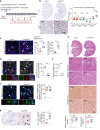
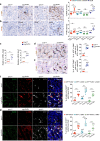
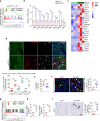
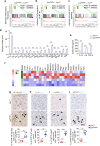
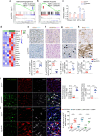


Similar articles
-
Consequences of telomere dysfunction in fibroblasts, club and basal cells for lung fibrosis development.Nat Commun. 2022 Oct 6;13(1):5656. doi: 10.1038/s41467-022-32771-6. Nat Commun. 2022. PMID: 36202783 Free PMC article.
-
Increased telomere fragility and fusions resulting from TRF1 deficiency lead to degenerative pathologies and increased cancer in mice.Genes Dev. 2009 Sep 1;23(17):2060-75. doi: 10.1101/gad.543509. Epub 2009 Aug 13. Genes Dev. 2009. PMID: 19679647 Free PMC article.
-
Short and dysfunctional telomeres sensitize the kidneys to develop fibrosis.Nat Aging. 2021 Mar;1(3):269-283. doi: 10.1038/s43587-021-00040-8. Epub 2021 Mar 15. Nat Aging. 2021. PMID: 37118410
-
Epithelial to Mesenchymal Transition (EMT) and Endothelial to Mesenchymal Transition (EndMT): Role and Implications in Kidney Fibrosis.Results Probl Cell Differ. 2017;60:345-372. doi: 10.1007/978-3-319-51436-9_13. Results Probl Cell Differ. 2017. PMID: 28409352 Review.
-
Endothelial to mesenchymal transition in kidney fibrosis.Nephrol Dial Transplant. 2024 Apr 26;39(5):752-760. doi: 10.1093/ndt/gfad238. Nephrol Dial Transplant. 2024. PMID: 37968135 Review.
Cited by
-
Association Between Telomere Shortening and Erythropoietin Resistance in Patients with Chronic Kidney Disease Undergoing Hemodialysis.Int J Mol Sci. 2025 Apr 5;26(7):3405. doi: 10.3390/ijms26073405. Int J Mol Sci. 2025. PMID: 40244253 Free PMC article.
-
Dietary addition of magnesium hydride nanoparticles: a breakthrough in combating high-fat diet-induced chronic kidney disease.Med Gas Res. 2025 Sep 1;15(3):374-382. doi: 10.4103/mgr.MEDGASRES-D-24-00090. Epub 2025 Apr 17. Med Gas Res. 2025. PMID: 40251018 Free PMC article.
-
The crucial role of metabolic reprogramming in driving macrophage conversion in kidney disease.Cell Mol Biol Lett. 2025 Jun 16;30(1):72. doi: 10.1186/s11658-025-00746-2. Cell Mol Biol Lett. 2025. PMID: 40524149 Free PMC article. Review.
-
Side-by-Side Comparison of Culture Media Uncovers Phenotypic and Functional Differences in Primary Mouse Aortic Mural Cells.Cells. 2025 Jun 19;14(12):927. doi: 10.3390/cells14120927. Cells. 2025. PMID: 40558554 Free PMC article.
References
MeSH terms
Substances
LinkOut - more resources
Full Text Sources

